10 pain signs in cats

We tend to think that cats are very resistant animals. Many of us almost attributed to them supernatural powers, like that for example the cats have seven lives, nevertheless, the reality is very different: the cats, are masters in the art of disguising the signs of pain. Due to this peculiarity, it is difficult to detect that the cats are suffering.
This article aims to guide when it comes to recognizing pain in cats, although as in all animals, it will always vary from one to another. Keep reading and discover The 10 pain signs in cats:
Signs of pain associated with osteoarthritis
One of the main causes of pain in cats is arthrosis, a pathology that, as occurs in humans, involves the wearing away of joint cartilage. In case of suffering, the feline will show the following signs of damage:
- Reluctance to movement (refuse to move). Many cats that are sore from muscle and skeletal problems they avoid moving as far as possible. But, at a certain age, the tendency to move just enough may be indicating that the pussycat is suffering from osteoarthritis and not that it is “vague”. Unlike cats, dogs “tell us”, as they accompany us on our walks, at which time any discomfort when walking is revealed. Cats choose to suppress what causes them pain, so that they no longer climb their favorite bookshelf, for example, and limit their daily wandering.
- Depositions outside the sandbox. Those of us who habitually deal with cats associate the fact that they urinate outside with a punishment for our absence or furniture changes, for example. But sometimes, our feline can not access the sandbox because of pain. That is why a physical revision of the cat is essential, before taking it for granted that it has become a little neat or that it is nervous.
- Prolongation of rest times. The last of the signs of pain in cats related to osteoarthritis is that they settle for long periods of time in their beds. It is usual that we do not give importance to the subject if we have elderly cats because we think that they already have a certain age and that they have always enjoyed a lot of eternal naps. It is important to highlight the 14-16 daily hours that an adult cat spends resting, but if they do it at times of the day that were not usual or are increasing more and more, it may be a sign of pain.
How to know if my cat has pain from osteoarthritis?
We can know it mainly by observing its current behavior and evaluating if it has varied with respect to the previous one, in this way we will obtain many clues. For example, if our cat used to jump to the table as soon as he saw food, climbed the scraper or ran every night down the corridor for a long time and had not done so for a long time, the time to go for a review veterinary
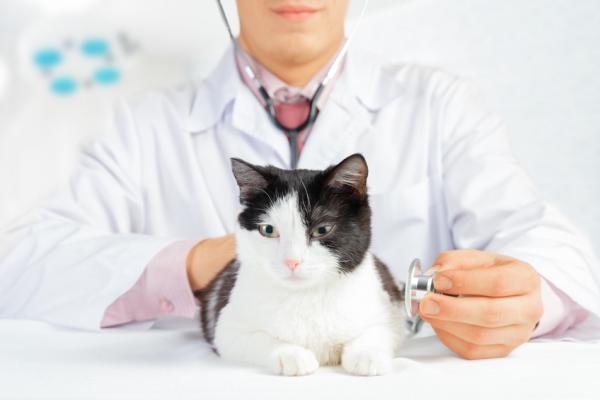
Lack of grooming and facial marking
When a cat feels some discomfort, one of the daily routines that is most affected is, undoubtedly, the autoaseo. However, it is not the only one to which we will have to pay attention to find out if the cat suffers from any type of pain:
- Lack of cleanliness. There are more meticulous cats than others in the daily cleaning, but if our cat used to spend some time grooming and has neglected a little this aspect, it can be indicative of some discomfort. The coat looks a little lustrous, bristly, and even rough.
- Lack of marking. The daily marking of the habitat, as it is the sharpening of nails and rubbing the jaws, is diminished, even some suppress it.

Protrusion of the nictitating membrane (we see a white membrane in the eye)
Cats and dogs have a whitish membrane that we can call the “third eyelid”, although its name is a nictitating membrane. Under normal conditions it is not seen, but when the Cat is apathetic, sore or feverish, we can observe it in the feline with open eyes, these symptoms being clear signs that something is not going well.
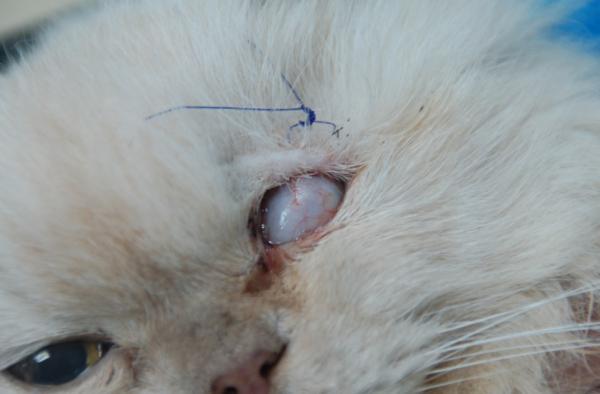
Sialorrhea (excess saliva)
Many times the pain in cats is related to alterations in the mouth and, although the feline maintains a more or less normal attitude and is interested in food, it is impossible to swallow. This causes the constant saliva output and the pilgrimage to the trough, even if it fails to take food.
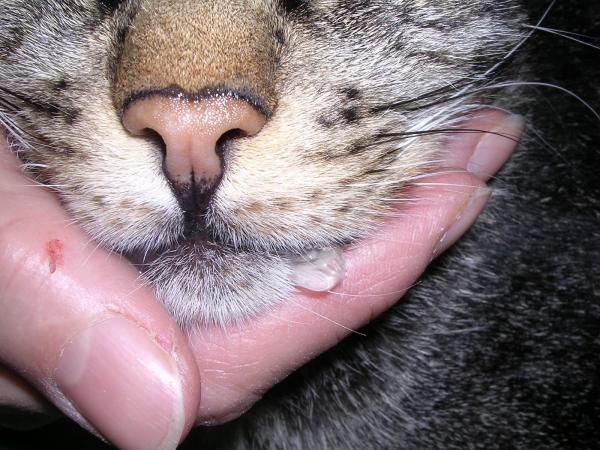
Aggressiveness
It can also be common in problems of behavior or stress, but some cats react aggressively to certain stimuli such as sign of pain (for example, a caress), manifesting behaviors that look like attacks.
If your cat used to be affectionate and docile and now has a surly attitude when you try to interact with him, go to the vet to rule out any health problems.
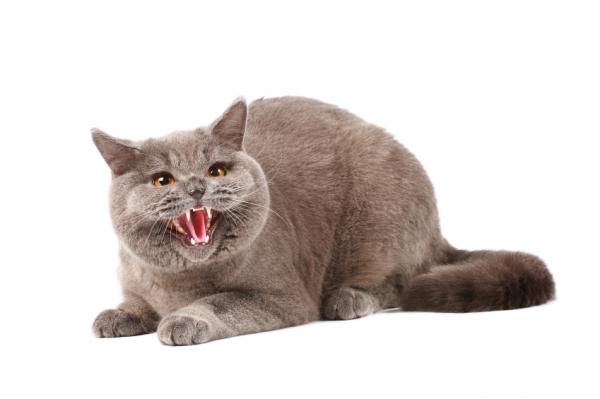
Excessive vocalization (more frequent meows)
There are “talkative” cats, for example Siamese cats, but if the feline meows more often than normal and for no apparent reason, it could be an alert that something is happening to it. It’s more of a emotional pain sign, but sometimes we can relate it to physical pain.
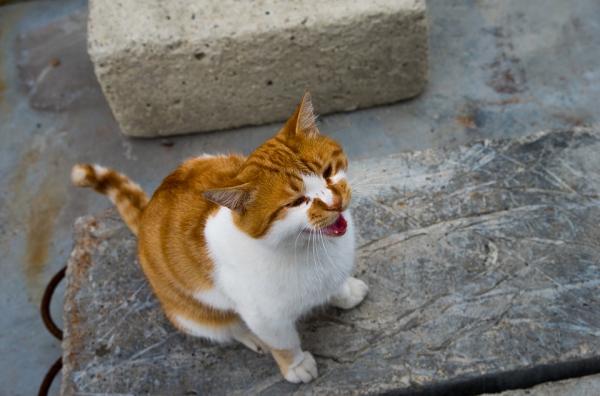
Anti-fatigue postures (postures that relieve pain)
It is not exclusive to dogs, although it is in them and in other animals that we usually see them. Cats are more discreet in everything that refers to manifest signs of pain, but when it reaches intensity, we can find our cat bent, or on the contrary, stretching the front legs as if it were continually stretching. As when humans notice cramps in the abdomen tend to shrink, we can find our feline in fact a ball, even stretched like a sausage. Usually they are visceral pains and the alterations in this case usually notice before the feline has to adopt these postures.
These easy-to-observe details can help us identify the signs of pain in the cat. As always, each cat is a world, and just as there are no two humans alike, there are no two equal ways of manifesting pain in cats, or in any other being.
With these brief tips, and the data that can be collected on a daily basis (lack of appetite, problems to urinate.), The veterinarian can guide the appropriate tests to a specific field, to alleviate the pain of the cats.
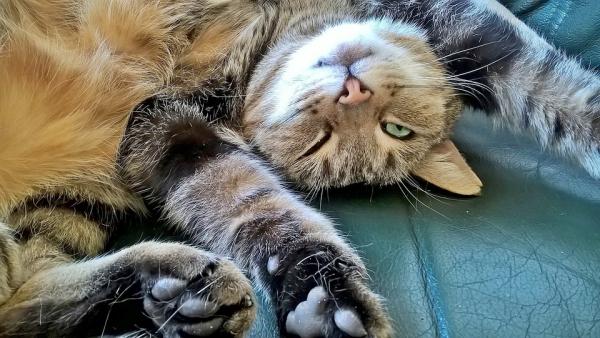
This article is merely informative, in .com we do not have the faculty to prescribe veterinary treatments or make any kind of diagnosis. We invite you to take your pet to the veterinarian in case of any type of condition or discomfort.
If you want to read more articles similar to 10 pain signs in cats, we recommend that you enter in our section of Other health problems.


